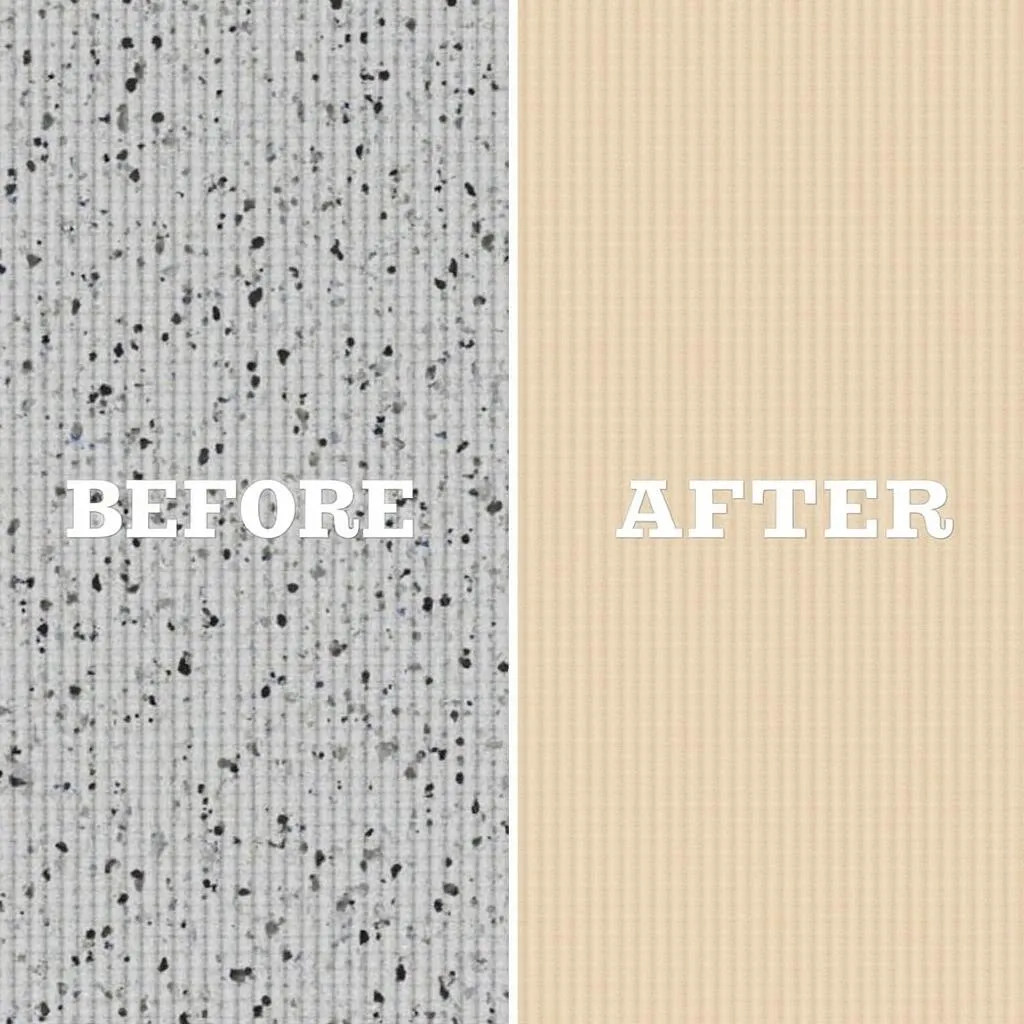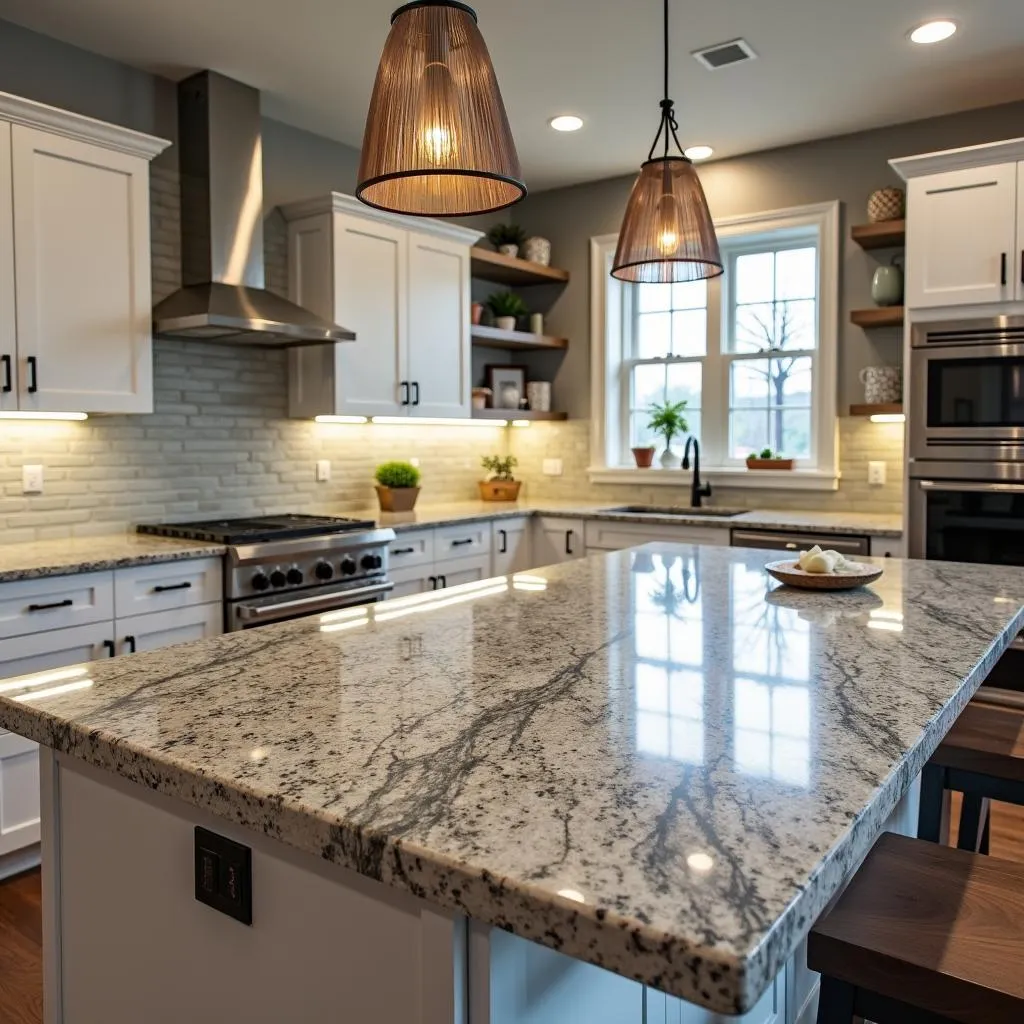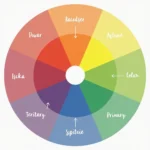You’ve found the perfect granite slab—it has the ideal veining, the perfect pattern, and would look incredible in your kitchen. There’s just one problem: the color doesn’t quite match your vision. This leads many homeowners to wonder, “can you change the color of granite?”
The answer, unfortunately, isn’t a simple yes or no. While you can’t fundamentally alter the mineral composition that gives granite its natural color, there are techniques that can modify its appearance to a certain extent. Let’s delve into the intricacies of granite coloration and explore the options available.
Understanding Granite’s Natural Beauty
Granite, a popular choice for countertops, flooring, and wall cladding, is renowned for its durability and unique aesthetic appeal. Its distinctive colors and patterns arise from the combination of various minerals, primarily quartz, feldspar, and mica.
- Quartz typically appears white or gray.
- Feldspar contributes to a spectrum of colors, including pink, red, white, and gray.
- Mica introduces shades of black, brown, green, or metallic flecks.
The specific blend and distribution of these minerals within each granite slab result in its one-of-a-kind appearance. This inherent uniqueness also means that achieving a dramatic color transformation is highly improbable.
Exploring Color Modification Techniques
While a complete color overhaul isn’t feasible, there are methods to subtly alter the appearance of granite:
1. Enhancing Natural Colors
Professional-grade sealers and enhancers can be applied to granite surfaces to deepen and enrich their existing colors. These products penetrate the pores of the stone, highlighting its natural beauty and emphasizing its inherent patterns.
 Granite color enhancer application
Granite color enhancer application
This technique works best on darker granite shades, as lighter colors may not exhibit a significant change. It’s crucial to consult with a reputable stone professional who can recommend the appropriate products and techniques for your specific granite type.
2. Staining for a Subdued Shift
Granite staining involves applying a specialized stain to the surface, which penetrates the pores and subtly alters the color. This method can achieve a more noticeable change than color enhancement, but it’s still limited in its ability to drastically transform the overall hue.
 Granite staining process
Granite staining process
Granite staining is a highly specialized process that requires expertise and precision. It’s crucial to work with an experienced professional who understands the nuances of granite porosity and can ensure a consistent and desirable outcome.
3. Resurfacing for a Dramatic Transformation
In cases where a significant color change is desired, granite resurfacing offers a more drastic solution. This intricate process involves grinding down the top layer of the granite, effectively removing the existing finish and exposing a fresh surface. A new color can then be applied using specialized epoxy coatings or by adhering a thin layer of different granite or engineered stone.
However, resurfacing comes with its own set of considerations. It’s a costly and labor-intensive process that may not be feasible for all projects. Additionally, it can impact the natural beauty and uniqueness of the granite, potentially diminishing its inherent value.
Setting Realistic Expectations
Before embarking on any color modification journey, it’s crucial to establish realistic expectations. Remember that granite, like any natural stone, possesses inherent limitations. While you can enhance, subtly shift, or even resurface its color, you cannot fundamentally alter its mineral composition.
“Embrace the inherent beauty of natural stone,” advises Sarah Williams, a leading interior designer at Design Elements. “Instead of trying to force a drastic color change, explore design elements that complement and harmonize with your granite’s unique characteristics.”
 Kitchen design with natural granite
Kitchen design with natural granite
Conclusion
The question of “can you change the color of granite” doesn’t have a straightforward answer. While a complete transformation isn’t achievable, there are techniques available to subtly enhance, stain, or even resurface its color. The best approach depends on your desired outcome, budget, and the specific type of granite you have. Consulting with a reputable stone professional is crucial to determine the most suitable option and ensure a successful outcome that complements your design vision.
Remember, the true beauty of granite lies in its natural variations and unique character. Embrace its inherent qualities and explore design choices that harmonize with its innate charm to create a space that reflects your personal style and stands the test of time.
FAQs
1. Can I change the color of my granite countertops myself?
While there are DIY kits available, it’s highly recommended to hire a professional for color modification techniques like enhancing, staining, or resurfacing. These processes require expertise and specialized equipment to ensure optimal results and avoid potential damage to your granite.
2. How much does it cost to change the color of granite?
The cost varies significantly depending on the chosen method, the size of the area, and the location. Color enhancing is the most affordable option, while resurfacing is the most expensive. Obtain multiple quotes from reputable professionals to get an accurate estimate for your specific project.
3. How long does it take to change the color of granite?
The time frame depends on the chosen technique and the complexity of the project. Color enhancing can often be completed within a day, while staining or resurfacing may require several days to a week.
4. Will changing the color of granite affect its durability?
When performed correctly by experienced professionals, color modification techniques should not significantly impact the durability of your granite. However, it’s crucial to choose reputable professionals and high-quality products to ensure long-lasting results.
5. What are some alternatives to changing the color of granite?
If you’re seeking a different look without altering your existing granite, consider exploring options like:
- Decorative accents: Introduce pops of color and visual interest through accessories, backsplashes, and cabinet hardware that complement your granite’s existing hue.
- Strategic lighting: Experiment with different lighting fixtures and techniques to highlight specific areas and create a desired ambiance.
- Complementary materials: Incorporate materials like wood, metal, or glass that harmonize with your granite’s color and add visual contrast.
Need Help with Your Granite?
Contact us today at 0373298888 or email us at [email protected]. Our team of experts is available 24/7 to answer your questions and provide personalized guidance. You can also visit our showroom at 86 Cầu Giấy, Hà Nội, to explore our wide selection of granite and discuss your project needs in person.

